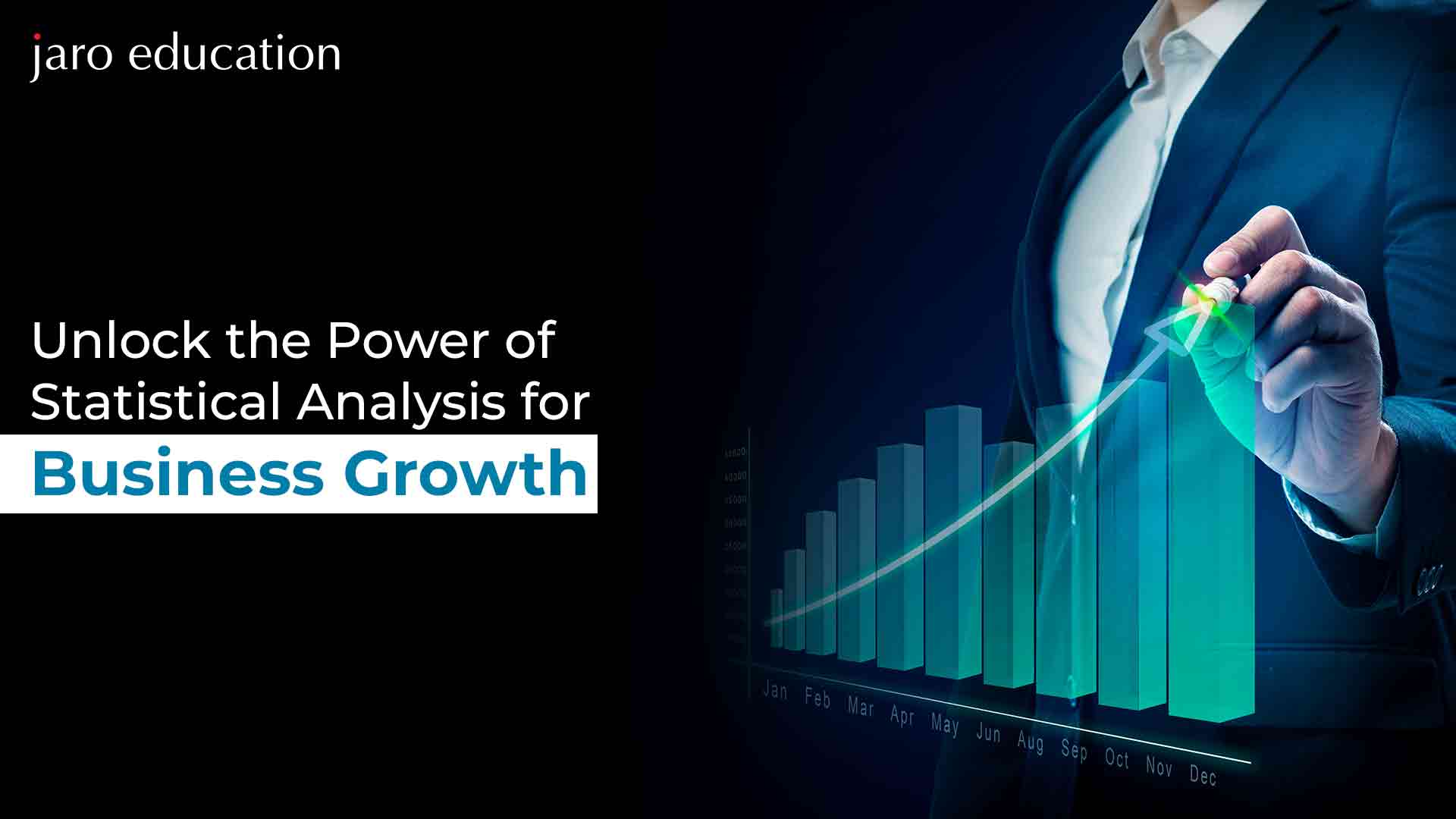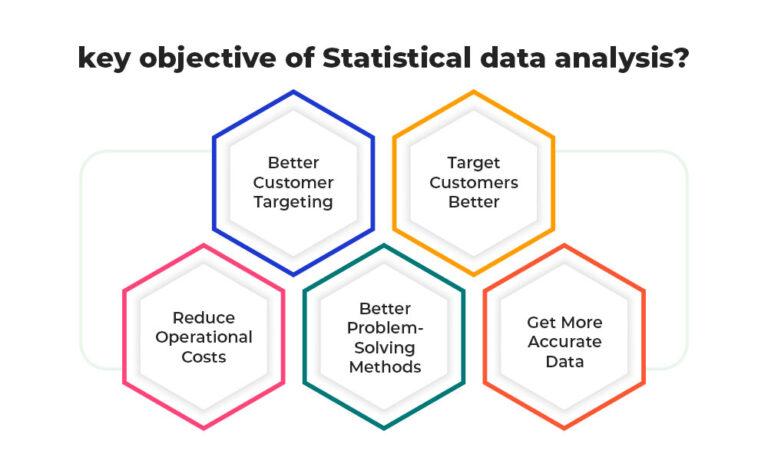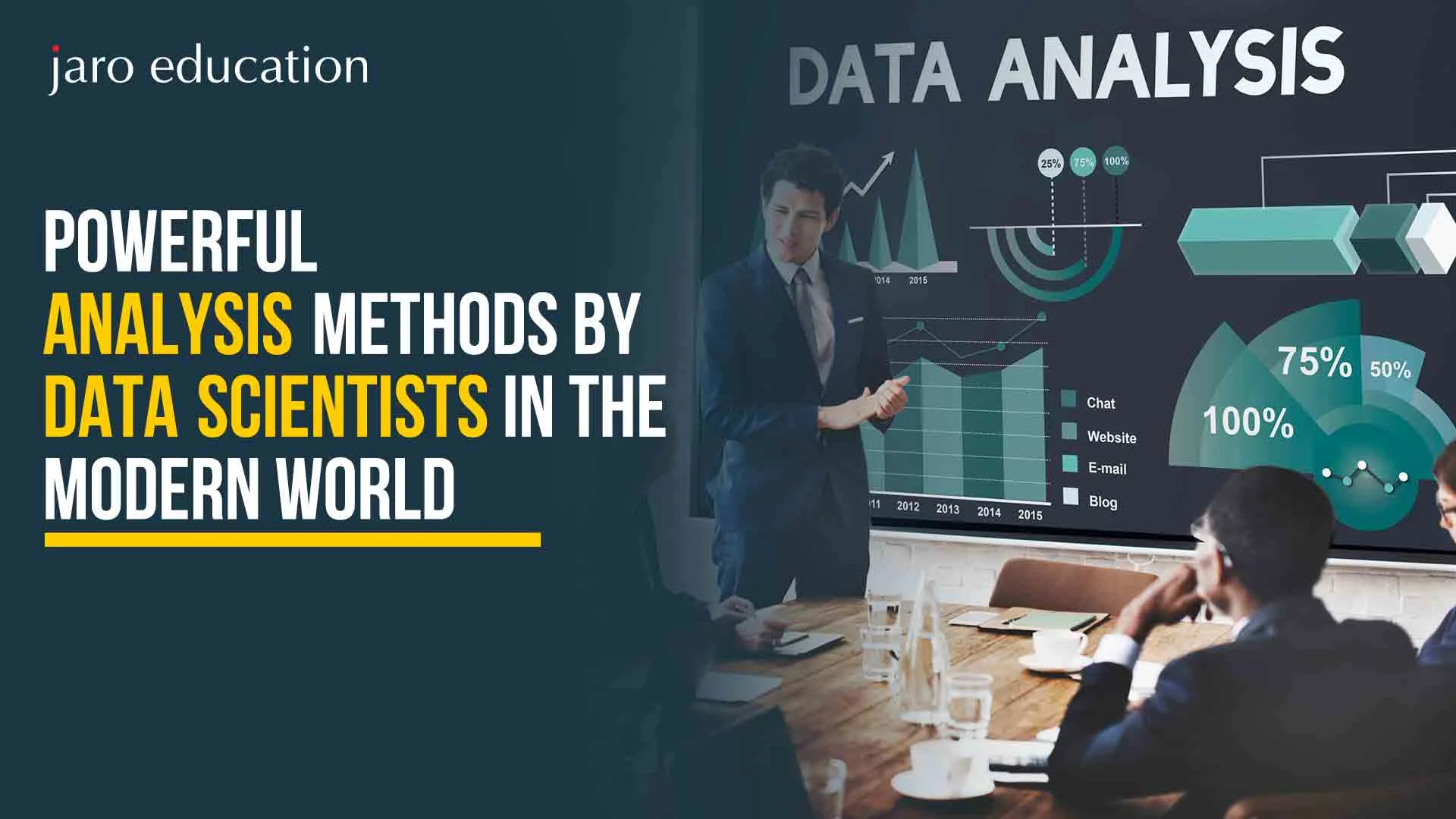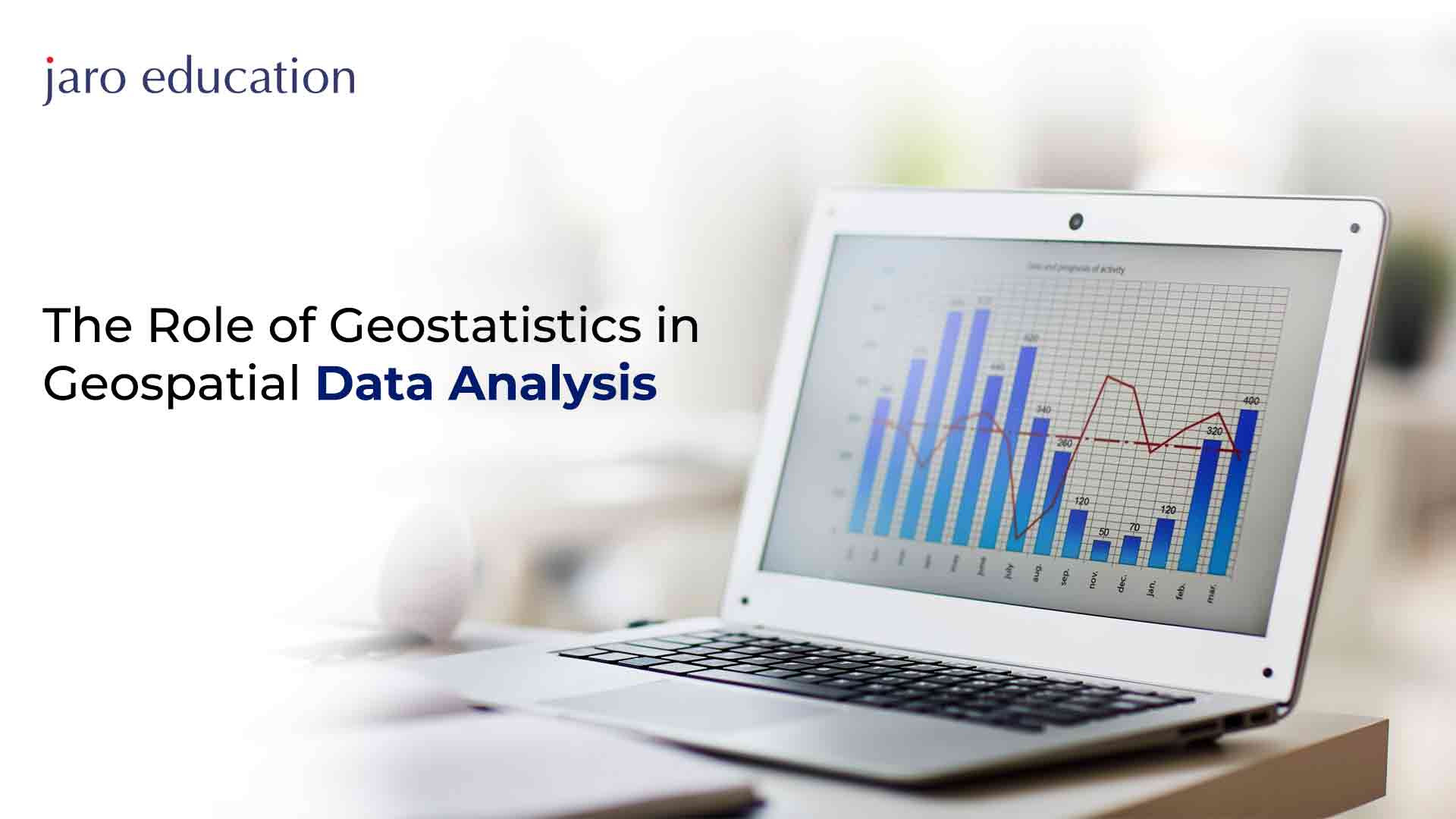Unlock the Power of Statistical Analysis for Business Growth
Table of Contents

- jaro education
- 28, September 2023
- 4:00 pm
Statistical analysis is a critical deciding factor for shaping the future of any company. Any progressive organisation, regardless of its sector or size, needs to continue rigorous research to keep its venture growing exponentially. In other words, when it comes to business growth, statistical analysis acts as a predominant pillar to keep it moving in a prosperous direction. From marketing and staff performance to sales and inventory, everything needs to be statistically analysed to gain relevant insights and work on them.
For getting a comprehensive understanding of various domains of business, like statistical analysis, you can enroll yourself on the Online MBA Programme by Manipal University Jaipur. This 24-month programme is relevant to acquiring skills associated with marketing without disrupting your personal or professional life, as this course promotes self-paced learning. This UGC-approved globally recognised degree can act as a stepping stone to upgrade yourself in the field of business and accelerate your career growth prominently.
What is Statistical Analysis?
The process by which companies collect various data samples within a target population of buyers is termed statistical analysis. These are commemorated through different methods like polls, experiments, and surveys and then analysed by calculating the mode, mean, and median from the obtained data. After completing the calculations, managers have the responsibility to portray the figures in front of the stakeholders through graphical representations, tables, and charts to come up with a solution for the detected problem areas or deduce better ways to function within the organisation.
Statistical analysis is a game-changing tool that enables you to comprehend the patterns and changing trends viable among the target audience. It provides thoughtful insights into the shifting focus of customers toward similar products being offered by close competitors.
Methods Used for Statistical Analysis
Different methods are being used by various companies to carry out statistical analysis for various data sets. Here are the key methods that are predominantly used in most cases.
Mean (Average)
Also called an average, mean is one of the simplest statistical measures commonly used by people. By calculating the mean, you can represent the central tendency of a data set. For calculating the mean of a dataset, you need to sum up all the values in the dataset and then divide the sum by the number of data points. It is a method generally used to compare various data or summarise them.
Standard Deviation
It is a method to measure the dispersion of data points around the mean. A low standard deviation implies that data points are close to the mean. On the other hand, a high standard deviation indicates that data points are more spread out. You can use standard deviation to check for variability within your dataset.
Regression Analysis
By using regression analysis, you can model relationships between variables. One of the most common regression methods is linear regression, which aims to find a linear equation that best describes the relationship between a dependent variable (the outcome you want to predict) and one or more independent variables (predictors).
Sample Size Determination
For statistical analysis, determining an appropriate sample size holds immense importance. It requires selecting the right number of observations or data points to ensure the results are reliable and statistically meaningful. Factors like the margin of error allowed and variability within the population decide the sample size.
Types of Statistical Analysis Used By Business Ventures
For analysing past performances and historical data, statistical analysis is of great help. However, there are four types of analysis methods utilised for different purposes, which are discussed below.
Descriptive Analysis
In this type of analysis, only a limited dataset is used, which is usually a small population. It is a straightforward way to carry out, and the outcomes are represented by a complete set of data. As this method is simpler to complete, it is less prone to analytical errors than other types of statistical analysis. It is a way to organise a data set, in addition to summarising it. By organising a data set, it converts the data into a more comprehensible format, making it easier to read and interpret.
Inferential Analysis
It is an appropriate type of statistical analysis, especially for analysing data from a large group, unlike descriptive analysis. Hence, inferential analysis selects a subset of data from a larger dataset, offering nearly accurate results that are applicable to the broader dataset. This approach is particularly valuable for tackling intricate mathematical calculations as it highlights evolving patterns and trends within a smaller subset of the extensive data collection.
Predictive Analysis
As the name suggests, it is a fine tool to predict what’s going to happen in the future of a venture. However, it is important to understand that it provides only a probable result, and the actual outcome may be different from the analytical results of this method. By using machine learning, statistical algorithms, and business intelligence, this type of statistical analysis predicts an indefinite pattern and trends in the market. This makes it a valuable model for organisations to offer various financial services, different service providers, insurance companies, and advertising agencies.
Prescriptive Analysis
This is an advanced version of predictive analysis. With predictive analysis, you get probable solutions to different challenges an organisation may face while making a decision, while with the help of prescriptive analysis one can forecast the future, which enables businesses to be ready with a viable marketing plan accelerating business growth. Prescriptive Analysis is popular among utility companies, energy sectors, and the government sector, as it can garner valuable data and insights into the changing prices of gas and oil with the help of it.
Use of Statistical Analysis in the Current World
Statistics remains one of the fundamental aspects of data analytics. It is being used in several ways by businesses, some of which are discussed below.
Research
Companies can leverage statistical analysis to better their research strategies. They can check the pattern of buying, like trends of return and exchange and work on enhancing customer experience based on the inference drawn.
Modelling
Data modelling, or the art of representing data graphically using graphs and charts, adds significance to a subject matter. It makes the reasons behind conducting an analysis more relevant. Plus, it enhances communication by making analysts represent data in formats accessible to everyone.
Survey Designing
For creating a comprehensive and to-the-point statistical analysis, gathering relevant data holds immense importance. Organisations can conduct it by survey designing. Survey Designing should be done in a way that can successfully measure customer satisfaction levels and feedback to improve their services accordingly.
Other Uses
Statistical analysis also has other uses for varied business interests. It enables ventures to mitigate problems and improve risks, drive innovation, and improve customer acquisition and supply chain methods.
Benefits of Statistical Analysis for Businesses
Statistical analysis has a major role in understanding marketing and taking a business to another level. Besides this, there are several other benefits of statistical analysis for organisations, which are described here.

*brainanalyst.in
Identification of Various Business Opportunities
Analysis of a company not only enhances its productivity but acts as an excellent medium to find probable business prospects which may get ignored otherwise. This makes the growth potential of a company exponential, and they can plan their operations to earn the best profits accordingly.
Decreasing Delay in Delivery
Shipping ventures witness the challenge of transporting countless goods on a daily basis. To optimise the efficiency and dependability of their vehicles, many organisations are taking advantage of the power of analytics. By collecting and analysing sensor data from each automobile, companies can monitor the conditions of various parts within their shipping fleets. This enables companies to have seamless deliveries with a guarantee that their vehicles will keep moving without any disruptions from an existing problem.
Enhancing Customer Targeting
As per the findings of McKinsey & Company, utilising data for deciding on smart marketing strategies can amplify marketing productivity by a considerable amount. Organisations often utilise extensive datasets for predictive analytics, aiming to amplify and refine customer interaction with their brand. Identifying the right tools to scrutinise customers’ buying behaviours and online browsing habits and implementing them effectively can empower businesses to discover valuable insights. These insights, in turn, can be used to activate customer instincts and seamlessly integrate them into your company’s operations.
Improving Internal Processes
-
- Identifying the root cause of the problems (Reports)
- Checking the factors responsible for the problem (Diagnosis)
- Predicting future development and possible trends (Predictions)
- Suggesting the optimal course of action (Recommendation)
Superior Service Performance
In the sector of food delivery, service providers like Swiggy and Zomato rely on both restaurants partners and their delivery teams to meet customer orders at the right time. By analysing factors, like estimated cooking time and delivery routes in major cities, they can effectively gauge their ability to meet customer demands. This approach helps them to maintain agreements and redirect orders when delivery is not feasible.
Conclusion
The utilisation of statistical analysis acts as a transformative force for businesses looking forward to competitiveness and growth. Companies can use statistical analysis and get valuable insights on various datasets. As we move forward into an increasingly data-centric era, those who embrace statistical analysis will be better equipped to adapt to new trends faster to endure growth and development at a fast pace.
If you are interested in navigating through the world of business and digging deeper into statistical analysis for business growth, the Online MBA Programme by Manipal University Jaipur can be a course worth registering for. You can carry on with your regular professional life as it provides over 1000 hours of recorded and live tutorials by top-tier faculty and mentors. Contact Jaro Education and get more details about the programme.










